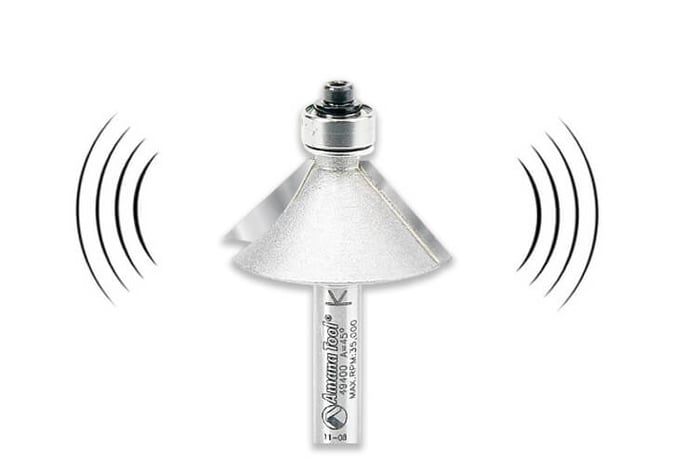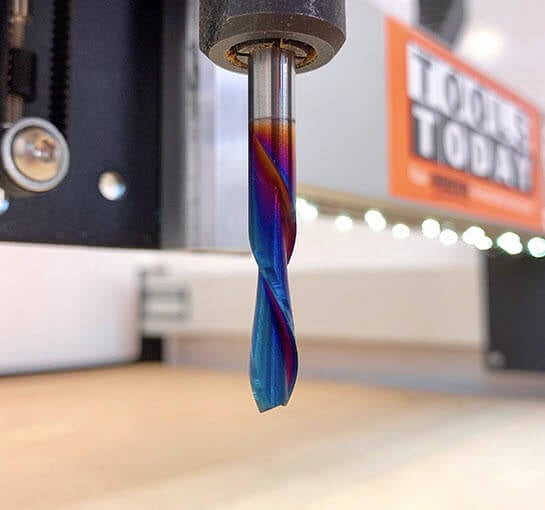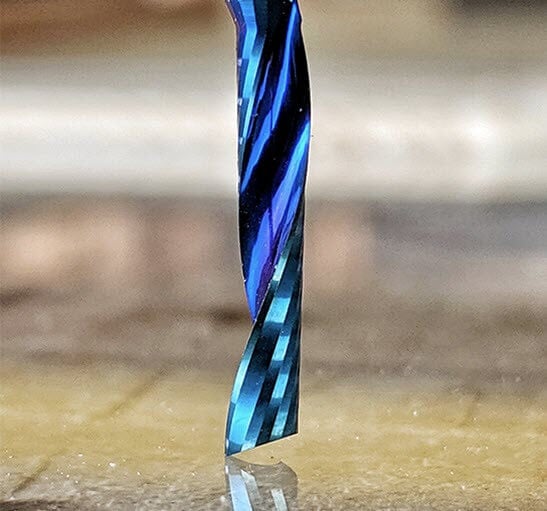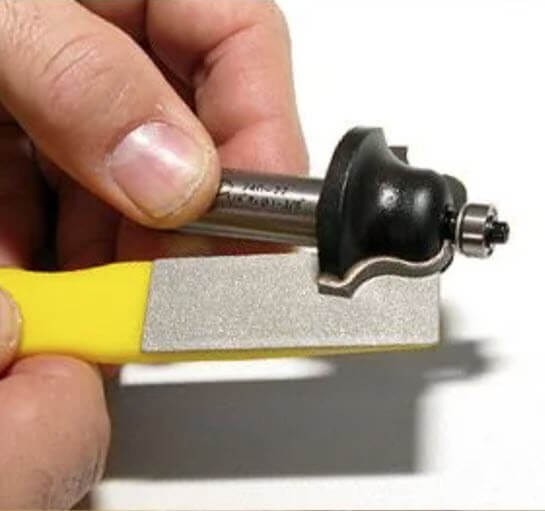
Router Bit Maintenance Tips: How to Keep Your Bits Sharp
Router Bit Maintenance Tips
How to Keep Your Router Bits Sharp
Key Takeaways
· Router bit maintenance is crucial for optimal performance: Regular maintenance helps prevent router bits from dulling, ensuring clean and precise cuts. By keeping your bits sharp, you can achieve better woodworking results.
· Recognizing signs of dull router bits is essential: Understanding the signs of a dull router bit, such as burn marks, tear-out, or difficulty in cutting, helps woodworkers identify when their bits need sharpening.
· Tips for prolonging the lifespan of router bits include avoiding excessive heat, using proper feed rates, using sharp bits for each application, and providing proper storage and protection for the bits.

See our video: “How to Make a Router Bit Storage Cabinet”
Importance of Router Bit Maintenance
With its intricate design, a router bit is an essential tool for woodworking. Proper maintenance ensures that the bit retains its sharpness and longevity, allowing for precise and smooth cutting. Neglecting router bit maintenance can lead to dullness, affecting the quality of the finished product.
To maintain the sharpness of your router bits, regular cleaning and inspection are essential. Remove any debris or buildup that may be present on the cutting edges, as this can lead to poor cutting quality and premature dullness. Additionally, make it a habit to inspect the bits for any signs of damage or wear, such as chips or nicks, as these can affect their performance.
Proper storage is another key aspect of router bit maintenance. Keep your bits in a secure and organized manner to prevent accidents and damage. Consider investing in a dedicated router bit case or organizer to ensure easy access and protection. Storing them correctly will also help prevent them from coming into contact with moisture or other potentially damaging elements.
Furthermore, it is important to remember that router bits are not universal tools. Each bit is designed for specific cutting applications and materials. To maintain the sharpness and effectiveness of your router bits, always choose the right bit for the job at hand. Using the wrong bit can result in poor performance, excessive strain on the router, and potential damage to the bit itself.
True Fact: According to Woodworkers Guild of America, router bits with carbide cutting edges can stay sharp up to 50 times longer than steel bits, making them the preferred choice for professional woodworkers seeking longevity and efficiency.
Why Router Bits Dull
The cause behind the dullness of router bits lies in their usage over time. Router bits become dull due to the continuous friction experienced while cutting through various materials. This friction causes the bit's cutting edges to wear down and lose their sharpness. When a router bit is no longer sharp, it becomes less efficient in cutting through materials, resulting in slower and less accurate work.
To maintain the sharpness of router bits, proper maintenance is crucial. Regular cleaning of the bits after each use helps remove any resin or debris that may have accumulated. Additionally, using lubricants during operation can minimize heat and friction, prolonging the lifespan of the bit's cutting edges.
However, even with regular maintenance, router bits will eventually lose their sharpness and require professional attention. Seeking professional help for regrinding or sharpening the dulled bits is necessary to restore their original cutting performance.
Signs of Dull Router Bits
Dull router bits can be identified through various indicators. Here are five signs to look out for:
1. Reduced Cutting Efficiency: Dull router bits may struggle to cut through materials smoothly and efficiently. The cutting process may become slower and more laborious.
2. Burn Marks: If you notice burn marks on the wood or material being routed, it could be a sign of a dull bit. Dull bits tend to generate excessive heat, leading to scorching or burning.
3. Splintering or Chipping: Dull router bits may cause more splintering or chipping of the wood or material being worked on. This can result in a less clean and precise finish.
4. Increased Vibration or Noise: A dull router bit can produce more vibration or noise during operation. This can indicate that the bit is not cutting as effectively as it should, leading to increased strain on the tool.
5. Inconsistent Cuts: A dull bit may produce uneven or inconsistent cuts, resulting in an unsatisfactory outcome. This can be particularly noticeable when working on intricate or detailed designs.
It is worth noting that regular maintenance and sharpening of router bits can help prevent them from becoming dull. By taking proper care of your bits, you can ensure optimal performance and prolong their lifespan.
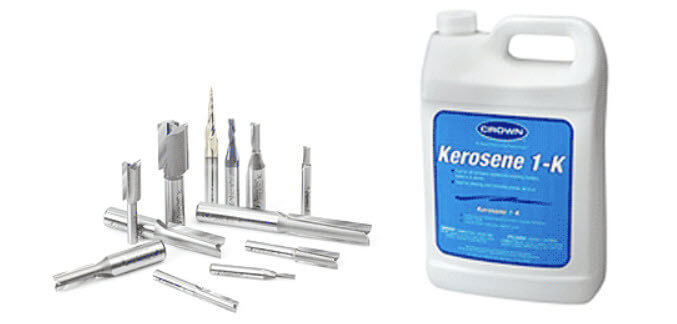
Maintaining Router Bits at Home
Proper maintenance of router bits is essential for their longevity and optimal performance. To ensure that your router bits stay sharp and are able to deliver clean and precise cuts, follow these steps:
1. Regular Cleaning: To remove pitch and tar, clean the bits regularly using mineral oil or WD-40. Scrub gently with an old toothbrush to ensure thorough cleaning.
2. Inspect for Wear: Regularly check the cutting edges for wear or damage. Address any nicks, chips, or dullness promptly to maintain optimal performance.
3. Gentle Handling: Avoid dropping or mishandling the router bits to prevent chipping or dulling of the cutting edges.
4. Use the Right Speed and Feed: Adjust the router's speed and feed rate according to the material being cut to avoid excessive heat that can lead to premature wear.
5. Use Accurate Router Setups: Ensure precise measurements and accurate fence positioning in your router setup to minimize strain on the bits.
6. Proper Storage: Store the router bits in a clean, dry environment away from excessive moisture or humidity. Protective cases or holders can help prevent damage during storage.
7. Regular Maintenance: Develop a habit of periodically inspecting and maintaining your router bits, even when not in use. This proactive approach helps prevent issues and ensures their reliability.
8. Professional Service: Maintaining precise bit geometry requires professional regrinding services.
By following these cleaning, storage, handling, speed adjustment, maintenance, and setup practices, you can keep your router bits sharp and effective, resulting in high-quality cuts and extended usability.
Pro Tip: Consider investing in high-quality carbide-tipped router bits, as they tend to have longer tool life when properly maintained through regular professional bit regrinding, compared to solid carbide or high-speed steel alternatives.

Watch the video or download the full transcript at “How To Calculate CNC Feeds and Speeds Video”
Conclusion: Keeping Your Bits Sharp for Precision Woodworking
To maintain the sharpness of your router bits, regular maintenance is crucial. Cleaning the bits after each use and removing any built-up residue will help to prevent dulling.
Additionally, inspecting the bits for any signs of wear or damage is important.
If necessary, sharpening the bits using appropriate tools and techniques will ensure their maximum efficiency and longevity.
Furthermore, storing the bits in a dry and secure place will protect them from any potential damage.
By following these maintenance practices, you can keep your router bits sharp and achieve precise woodworking results
FAQs about Router Bit Maintenance
· How quickly do router bits dull when working with solid wood?
Router bits, even those tipped with carbide, dull faster than you might expect. It happens quickly in solid wood.
· What can cause router bits to dull even more quickly?
Router bits can dull even more quickly when working with plywood and other resin-filled sheet goods.
· Can I sharpen my router bits myself?
While it is possible to lightly hone the bit's flat side with a diamond file, it is recommended to seek professional help for maintaining a bit's precise geometry.
· What tools do I need to hone high-speed steel and carbide bits?
All you need are a pair of diamond honing files, specifically a fine (600-grit) file and a super-fine (1,200-grit) file.
· How can I tell if my router bit needs professional grinding?
You can inspect the bit for nicks or blunt spots on the cutting edge, hold a fingernail against the cutting edge to see if it shaves with little effort, run the bit through softwood and examine the surface it leaves, and check the chips for their appearance.
· What is the approximate cost of professional sharpening services for router bits?
The cost of professional sharpening services for router bits can vary, but it can set you back as much as $10 per bit.



